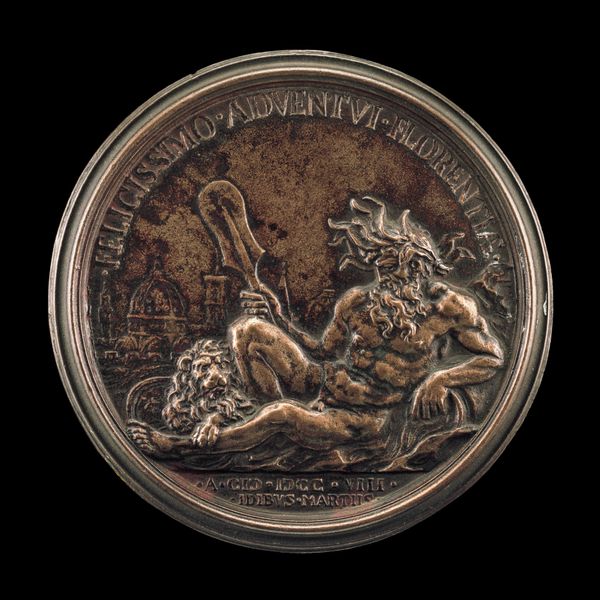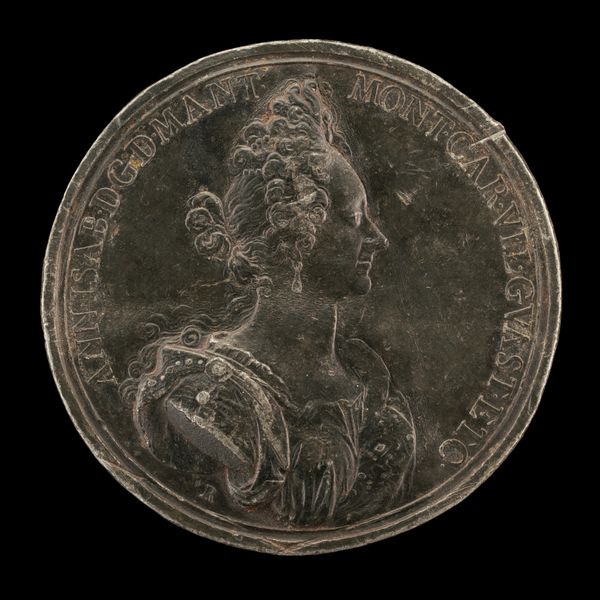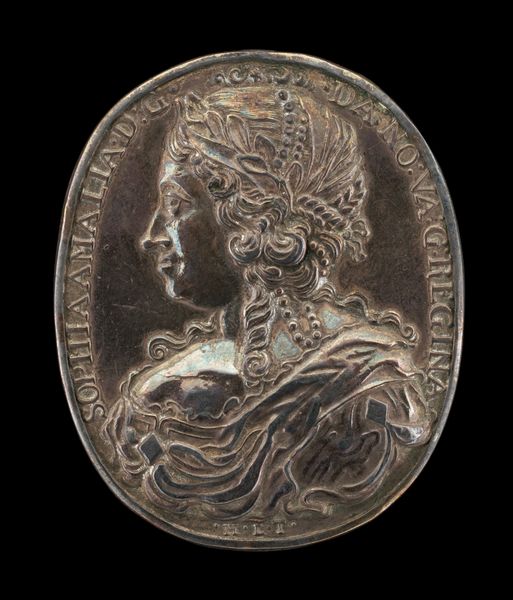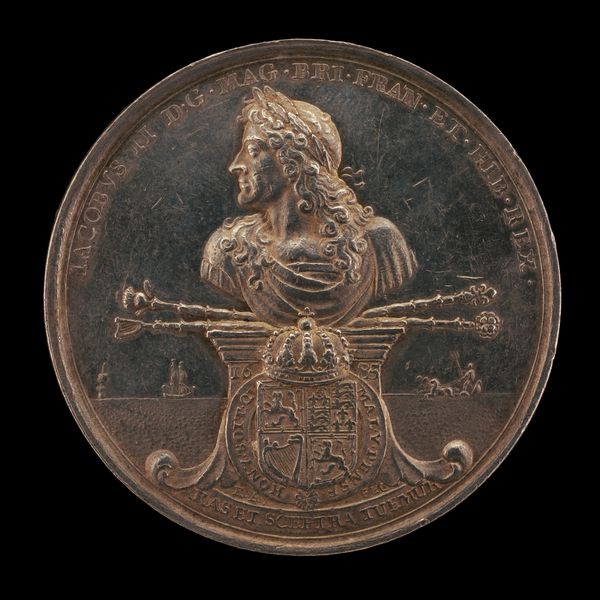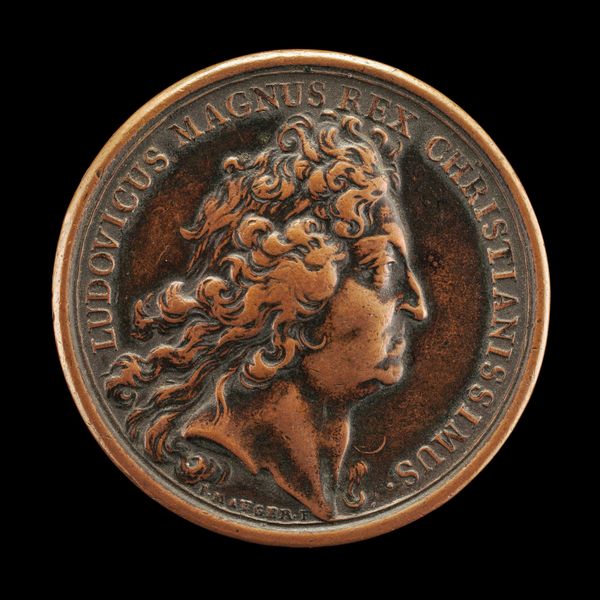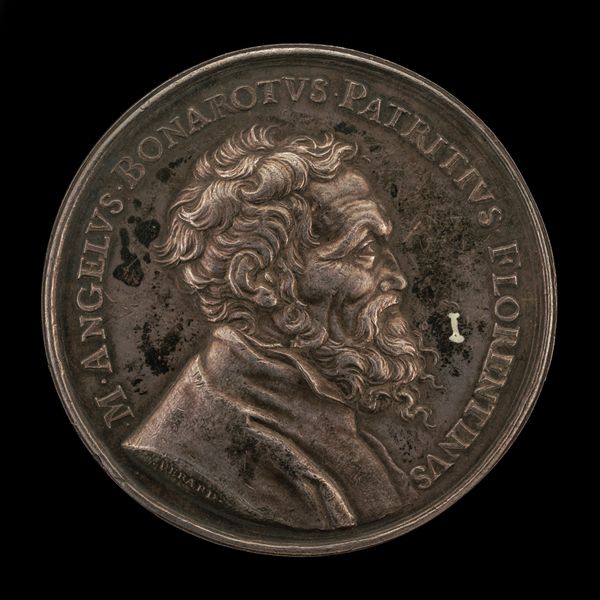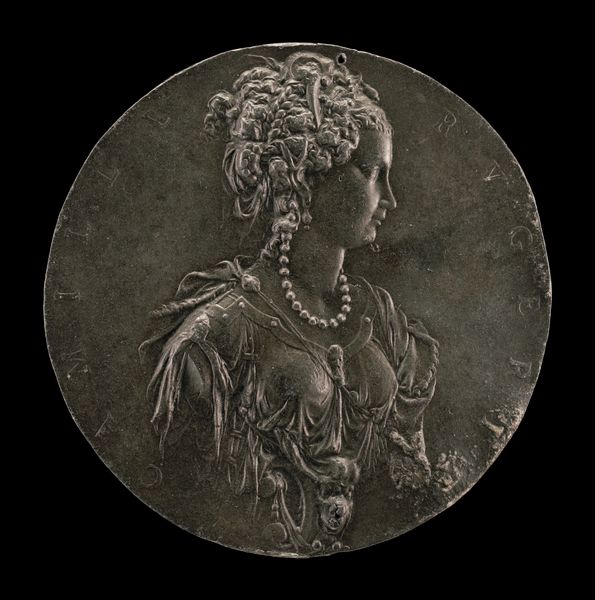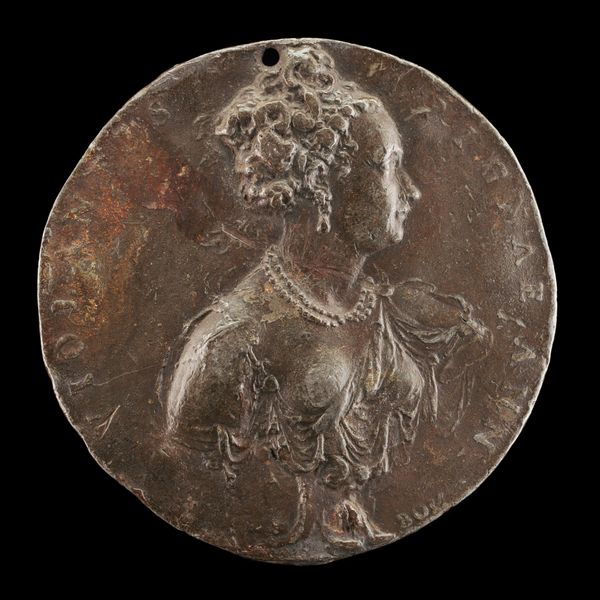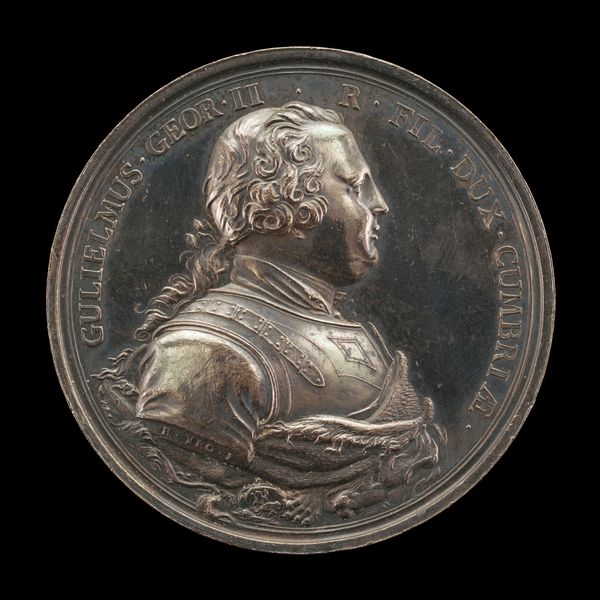![Frederick IV, 1671-1730, King of Denmark and Norway 1699 [obverse] by Antonio Montauti](/_next/image?url=https%3A%2F%2Fd2w8kbdekdi1gv.cloudfront.net%2FeyJidWNrZXQiOiAiYXJ0ZXJhLWltYWdlcy1idWNrZXQiLCAia2V5IjogImFydHdvcmtzL2FkNGJmNWQ3LWQ3ZTEtNGE5MS1iNGEzLTcxMWU1MjlkNTljNi9hZDRiZjVkNy1kN2UxLTRhOTEtYjRhMy03MTFlNTI5ZDU5YzZfZnVsbC5qcGciLCAiZWRpdHMiOiB7InJlc2l6ZSI6IHsid2lkdGgiOiAxOTIwLCAiaGVpZ2h0IjogMTkyMCwgImZpdCI6ICJpbnNpZGUifX19&w=3840&q=75)
Frederick IV, 1671-1730, King of Denmark and Norway 1699 [obverse] 1708
0:00
0:00
metal, bronze, sculpture
#
portrait
#
baroque
#
metal
#
stone
#
sculpture
#
bronze
#
sculptural image
#
sculpture
Dimensions: overall (diameter): 10.17 cm (4 in.) gross weight: 297.84 gr (0.657 lb.) axis: 12:00
Copyright: National Gallery of Art: CC0 1.0
Editor: This bronze medal, a portrait of Frederick IV, King of Denmark and Norway, dates back to 1708. It feels like such a formal, stiff depiction, capturing a sense of royal power. What can you tell me about the symbolism embedded within this portrait? Curator: Consider the wig, the armor, the very deliberate inscription encircling Frederick's profile. These aren't just elements of dress, they are visual cues carefully constructed to convey specific messages about his authority and legitimacy. Think about how hair, even artificial hair, signaled power. What does that say about cultural values and beauty standards? Editor: It’s fascinating to think of a wig as a power symbol! The armor, too, feels significant. Is it merely functional, or does it have another layer of meaning? Curator: Armor transcended simple protection, it spoke of military strength, a visual connection to historical warrior-kings. Do you see a kind of staged performance here, the armor paired with the almost theatrical wig? What message might the combination send to viewers of the time? Editor: I see what you mean. It’s about projecting an image of unassailable power and authority, linking him to the past while showcasing present strength. I never considered it that way! Curator: Exactly. Now consider how bronze as a material also lends weight and permanence to the message. Editor: This really brings the portrait alive. I hadn’t noticed all the embedded meanings before! Curator: And this close reading demonstrates the potent link between image and meaning. It really encapsulates how visual culture becomes such a vehicle of shared memory.
Comments
No comments
Be the first to comment and join the conversation on the ultimate creative platform.
